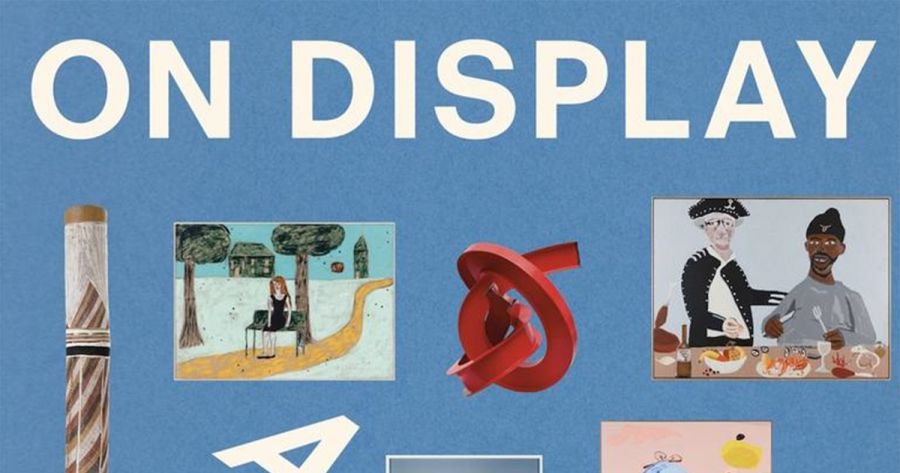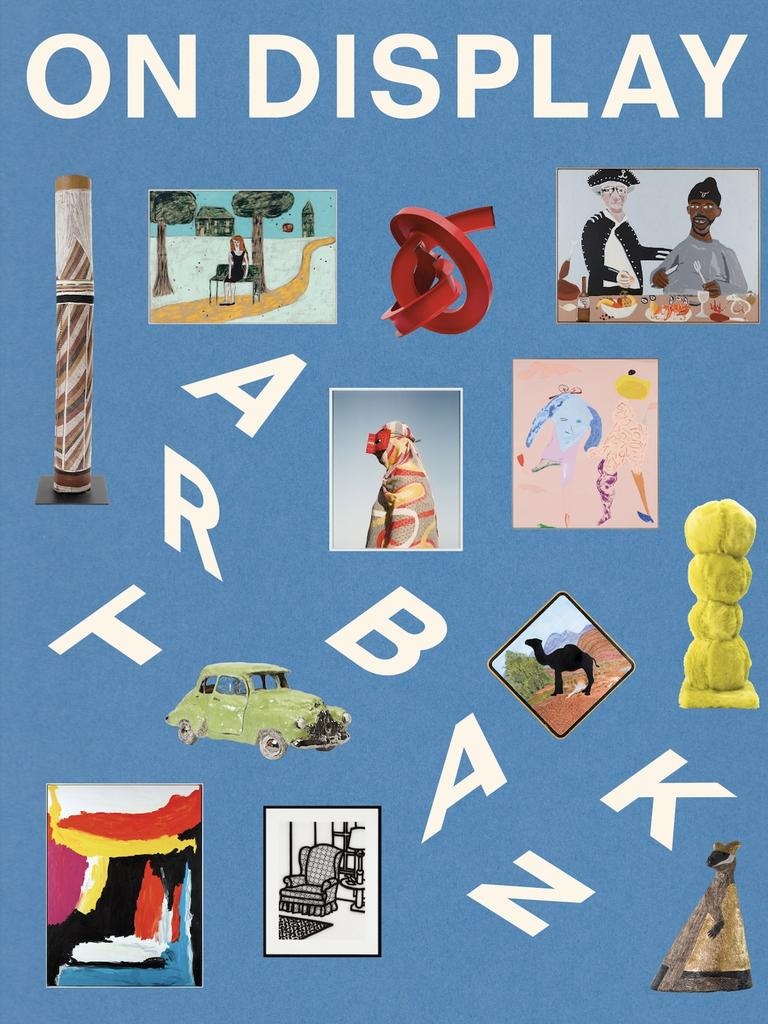
- Free Article: No
- Contents Category: Art
- Review Article: Yes
- Article Title: Democratising art
- Article Subtitle: A story worth telling
- Online Only: No
- Custom Highlight Text:
This handsome book is a strange beast: half official report, half pitch to potential clients, half lavishly illustrated history of four decades of collecting Australian art. Clearly, this does not add up. Which is a pity, because Artbank is important to the current visibility, and popular success, of contemporary art in Australia.
- Book 1 Title: On Display
- Book 1 Subtitle: The story of Artbank, Australia’s most visible collection
- Book 1 Biblio: Artbank, 296 pp
- Book 1 Cover Small (400 x 600):

- Book 1 Cover (800 x 1200):

Artbank was established in 1980, so this book celebrates its forty-fifth year, or a round half century if one counts five years of the Commonwealth’s previous Lending Collection, which was split between the (yet to be opened) Australian National Gallery and Artbank. The merits of the book? It is a story worth telling. Artbank is more a lending library than a bank, as lead author Laura Couttie points out. It holds over eleven thousand works of Australian art by living artists, and is one of the very largest collections, if not the largest, of recent art by Australians. And all this is available for rent, by government departments, private corporations, and ordinary citizens. It is a straightforward way of delivering Australian art to broad audiences.
To focus on collecting contemporary art in the late 1970s was a bold call, an investment in the country’s future – albeit one based on a Canadian model established in 1972. From the beginning, under founder-director Graeme Sturgeon, the policy was to purchase work by living Australians that had artistic merit, in a broad diversity of styles and media. Moreover, there was a leaning towards emerging artists, many not represented by galleries. And, of course, the work had to be lendable, a physical and a more-or-less conventional work of art, though much later, in the 2000s, Artbank began to collect video art, and currently holds over one hundred works.
The repeated claim that Artbank provides a ‘democratising’ opportunity for sharing current art seems built into the organisation’s DNA. In the late 1970s, contemporary art was indeed a niche activity, a specialty of dealer galleries, or artist-run initiatives, or later the nascent national network of funded contemporary art spaces, which began in the mid-1970s. And yes, seeing good, even challenging contemporary art in serendipitous encounters in public settings is often memorable, even thought provoking. But the democratic spin that Artbank still puts on these encounters is an argument born years before the current contemporary art boom; it predates the great growth over recent decades of collecting contemporary art in state and national art museums, which are all open and accessible to the public; and the success of exhibitions such as the Biennale of Sydney and the Asia Pacific Triennial of Contemporary Art, in Brisbane. It was articulated before the opening of the Museum of Contemporary Art in Sydney in 1991, or the Gallery of Modern Art in Brisbane in 2006. Who would have dreamt, then, of the popularity today of contemporary art?
Artbank recognises and recompenses artists for their work and brings delight through unexpected offerings (from a terrific collection) in public locations. From the start, Artbank’s curators were quick off the mark, travelled widely, and made early offers for works by artists who later became well known. It employed inventive directors, and excellent curators such as Sturgeon, Jackie Dunn, Miriam Kelly, and Daniel Mudie Cunningham, together with sophisticated art consultants to advise clients, and leading professionals to care for the collection. As Couttie notes, On Display offers a snapshot of Artbank’s rich holdings; to gain a more ample sense of it, one must consult Artbank’s website. Which I did, and can report that it is eminently searchable, with digital images of all works. (What it is to have a budget, even one that is for the most part earned.)
Indeed, On Display features copious illustrations in sumptuous colour, the visual message of accessibility constantly underscored in dozens of photographs of Artbank’s open-access storage racks at its Sydney and Melbourne premises, accessible by appointment to any member of the public. The book has benefited from intensive research, with many testimonials from contented artists, satisfied clients, previous directors, and curators justifiably proud of their achievements. Artbank has form here: for decades it has been an energetic publisher, and promoter, of its mission. As a curator, I most valued the section on Artbank’s collection, a potted chronological account of major collecting emphases over four decades, a sort of abbreviated narrative of Australian art with pithy commentary about media – textiles, ceramics, and indeed video. A pity, though, that many of these images are so small.
Importantly, Artbank pays particular attention to First Nations art: work by Aboriginal and Torres Strait Islander artists was collected earlier than by most major art museums; it now comprises about twenty per cent of Artbank’s collection and is extraordinarily important in the international representation of the country. And that takes us straight to soft diplomacy: Artbank is a neat administrative solution to requirements for art in public and official spaces, and the Department of Foreign Affairs and Trade (DFAT) has always been, and continues to be, Artbank’s largest client. Artbank provides works to ninety-nine embassies, high commissions, and other government offices internationally, as well as in Australia. Of special note are the various exhibitions of First Nations art that Artbank has toured in partnership with DFAT. After all, Artbank is part of the Office for the Arts, falling under Minister Tony Burke’s expansive portfolio.
Artbank’s collection policy is carefully up to date. There is a push to achieve gender parity in Artbank’s collection, with forty per cent of current works by women. An instructive note: Artbank loaned two paintings acquired in the early 1980s to Lesley Dumbrell’s 2024 survey exhibition at the Art Gallery of New South Wales, demonstrating the value of Artbank’s curatorship to public galleries of the future. Artbank is, after all, a generous lender to exhibitions.
Enmeshed in the communities of artists and galleries, Artbank has proved responsive to multiple shifts in the cultural climate. It has inherited the future it worked for so diligently and efficiently over four decades. So what are its acquisition priorities and policies now, and into the future? These are always a private matter, but I am struck by Artbank’s agnostic transparency and good intentions. It appears that, with its careful mantra of cost recovery, Artbank is secure in its future, despite being an arm of government: who can forget the proposal of the Howard government in 1996 to privatise Artbank, which was finally rejected in 1997, with bipartisan support? The short section ‘A threat to Artbank’ is instructive: the entire arts community – artists, galleries, peaks bodies – campaigned to keep Artbank in the public sector.
And now for the quibbles. The expensive (over-designed) cover scrambles Artbank’s name and makes fine works of art into postage stamps, in a mistaken gesture towards that prized inclusivity. And in a regrettable oversight, Laura Couttie, the principal author, is acknowledged only on the imprint page. So yes, there is a whiff here of the camel created by the committee. In the end, though, I am a true believer in Artbank’s contributions to the visibility of contemporary Australian art, so I will give the last word to an approving artist. Nat Thomas writes in her 2025 testimonial: ‘There is no greater encouragement for artists than having work collected into such an esteemed national treasure trove, where we might nestle in amongst the true greats.’


Comments powered by CComment